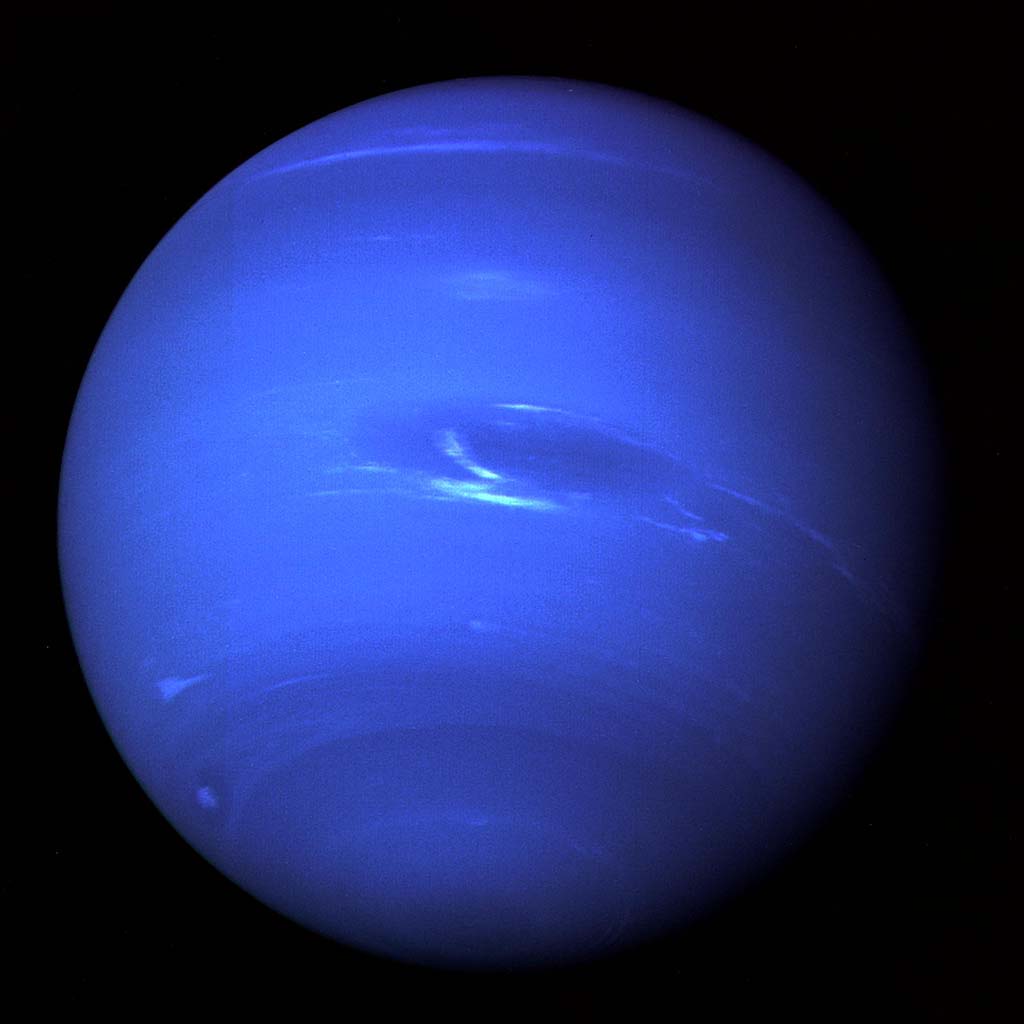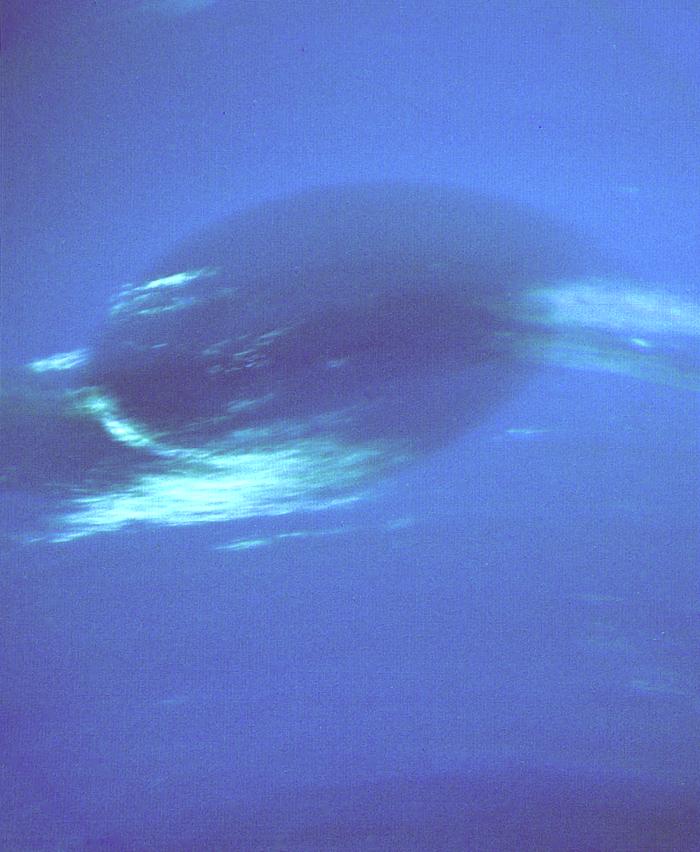Neptune's Dark Spots
Neptune, the furthest planet from the Sun in the solar system, is a giant ball of blue sky. It might look peaceful and pleasant, but Neptune is actually the solar system's coldest and stormiest planet where wind speeds exceed the speed of sound. Dark spots occasionally appear in the atmosphere of Neptune. These are regions of intense spinning storms where winds have been recorded as reaching 2,400 kilometres per hour (1,500 miles per hour), ten times greater than hurricane speeds on Earth. On Earth, a Category 4 hurricane can have winds up to 250 kilometres per hour (155 miles per hour) and these can cause massive damage. An example is Hurricane Katrina which devastated large parts of the USA in 2005. The storms in Neptune's spots also force icy methane crystals high up into the atmosphere of the planet, forming white clouds which surround the spots.


In 1977, the spacecraft Voyager 2 was launched on a mission to visit the four outer planets - Jupiter, Saturn, Uranus and Neptune. The final planet on its trip was Neptune which it reached in 1989. Because Neptune is so far away from Earth, astronomers had no idea what the planet would look like up close. Voyager 2 revealed that methane in Neptune's atmosphere causes it to have be a deep blue colour. It also observed an unusual Earth-sized dark spot. Known at the time as the Great Dark Spot, astronomers believed that it could be similar to the Great Red Spot on Jupiter, a storm that has been around for centuries.
In 1990, The Hubble Space Telescope was launched into an orbit of Earth. It is a large telescope that can see great distances into space. When it observed Neptune in 1994, five years after Voyager 2's visit, it revealed that Neptune's Great Dark Spot had vanished, but another one had appeared!
Later observations of Neptune through the Hubble Space Telescope have revealed the appearances and disappearances of more spots on Neptune. One characteristic of them is that they appear to move up and down, unlike Jupiter's Red Spot which is always in the same place in the planet's southern hemisphere. It seems that Neptune's spots vanish usually when they get closer to the equator of the planet.
The spots that have so far been observed have names like the Great Dark Spot, Dark Spot 2, Northern Dark Spot, Northern Dark Spot 1996, Southern Dark Spot, Northern Great Dark Spot, Dark Spot Jr. and Northern Great Dark Spot 2018. Those names aren't confusing at all, are they?! Dark Spot Jr. was smaller than the others, although was still larger than Earth's moon.
What are Neptune's Dark Spots?
Scientists aren't fully certain what causes Neptune's dark spots or exactly what they are. They are thought to be anticyclones which are wind systems rotating around a centre of high pressure. Regions of high pressure is where air is descending. This might be what why the spots appear darker as they are making deeper parts of Neptune's atmosphere visible. Other theories are that the dark spots are holes in Neptune's methane cloud layer, similar to holes that form in Earth's ozone layer. Further exploration is needed of Neptune to understand what causes them to appear and why they disappear.





